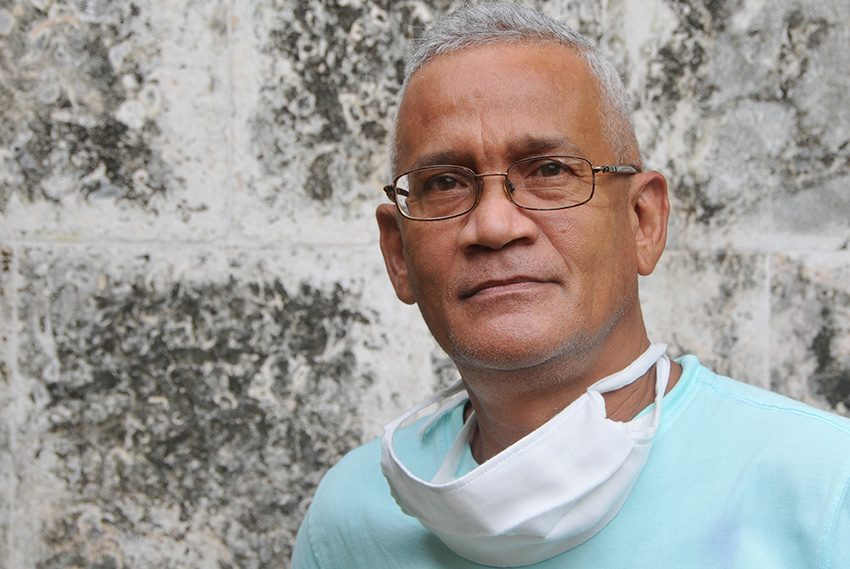
The National Council of Patrimony granted to Ricardo Ávalos Avilés, from Las Tunas, special recognition for his dedication of decades to the work in the museums.
Las Tunas, Cuba.- He is currently in charge of the Provincial Registry of Heritage Assets and was the only one of the experts from the east of the country to be distinguished this year during the celebrations for the International Museum Day.
I like offices that smell of ink, of old paper, where nothing seems to be in its place. I am sure that they are not irrigated or humid spaces, but marked by the complicity of the exhaustive and untimely work. That's what I felt when Ricardo Ávalos opened his door for me.
We had met before in some places, but never to talk for a long time. He was a man with an easy word, a sensitive look, and a deep knowledge of museum work and its impact on society. I know that, because I know of his years of constant work, both in hard times and in apparently happier times.
He tells me that, after losing his mother, his son, his granddaughter, and the Provincial Museum of Las Tunas, are the whole of his existence. I believe him. That's why I prefer not to ask him about the recognition that serves as an excuse for dialogue; I let him speak and limit myself to listening to part of his life story, reverence for dedication and love.
"After numerous efforts, I joined the ranks of a brave collective that was later to form the Provincial Museum. We carried out a task to rescue the heritage that was in the hands of individuals, families of martyrs, veterans, all invaluable objects that were increasing the funds of the place. In those days, in the 80s of the last century, they used to talk about the "museíto" (little museum). That's what it was, a place.
"It was in what at the time of the colony had been the headquarters of the Cavalry Barracks, a local monument here in the city of Las Tunas. And it was there, with hardly any space to exhibit the collections, where we happily inaugurated the museum that was historical properly speaking.
"When the museum opens its doors in its current location, it already has a multipurpose character because it treasures collections of numismatics, natural sciences, decorative arts and, of course, the funds of the history of the region here in the province of Las Tunas, which have been enriched.
It has been a long road... More than just asking, I say.
"There are moments that for me are indelible. Among them I do not forget the cultural Fridays, an activity that was done every Friday night and welcomed a large number of people, many became regulars. There, the institution's funds were promoted with a section called: What do I bring here?
"Another moment that struck me was in 1987 when Prima Ballerina Assoluta Alicia Alonso came. I had the chance to read the opening words of the exhibition with photographs related to the Giselle ballet, very paradigmatic in Alicia's dance work. I was marked by being less than a meter away from a woman who has left a mark on Cuban culture and society.
"Likewise, the development of children's courses and clubs because working with children is such a beautiful thing, something that changes within a person. But also, the knowledge that you bring to that child is returned to the family, shared, and already then that knowledge that you had deposited in a first-person, is already in a third person who is consuming it and is the fundamental objective of the museums. They cannot be seen as warehouses of old things.
"Because the museum also feeds on what we are doing at present and when the specialist in museology is creative, he internalizes and gets that museology virus, he does fabulous things and makes people feel fabulous inside a museum."
And how difficult that is! More than asking, I provoke him...
"Sometimes we get caught up in the routine. For the same reasons, we do every day, because of the material limitations of most of the museums in our country, for reasons we all know. But the specialist in museology, not only the specialist, the whole collective must be able to promote, but for this, fundamentally in museums, research into the collections must be encouraged.
"When you are able to rummage through each of the twists and turns of the objects on display, or the objects in storage, which in most cases account for a higher percentage of the collection when the museum staff is able to rummage through it, we will see that everything will always be seen differently. The important initiatives must go beyond this stillness, this immobility that is weighing us down.
"Here, in the province, we have some clear examples, such as the Grave de Peralta Museum in Puerto Padre. An institution that some years ago closed its rooms, but has a trained staff, very revolutionary, which tries to find alternatives to promote the objects that are stored."